Principles of functional solutions that use visible patterns on glazed areas
In many countries, ornithological research shows that following the correct procedures (as described below) can greatly reduce and, in some cases, completely remove the chance of birds flying into windows.
Covering windows with patterns of any shape works the best; such elements should ideally be spaced apart at the distances of 10 cm vertically or 5 cm horizontally. If the patterns are place with sufficient density, they can be of anything, e.g. silhouettes of birds, flowers, geometric shapes, stripes, etc. Birds are not warned by the shape of the pattern of the glass but by visual stimuli. Placing the items side-by-side on the window alerts birds to the fact they are unable to fly through the space. Of course, patterns arranged with larger gaps between objects are better than nothing, although less effective.
The individual parts of the patterns should be at least 0.5 cm in size. The various items should provide as much colour contrast as possible with the clear or reflective glass, helping them stand out.
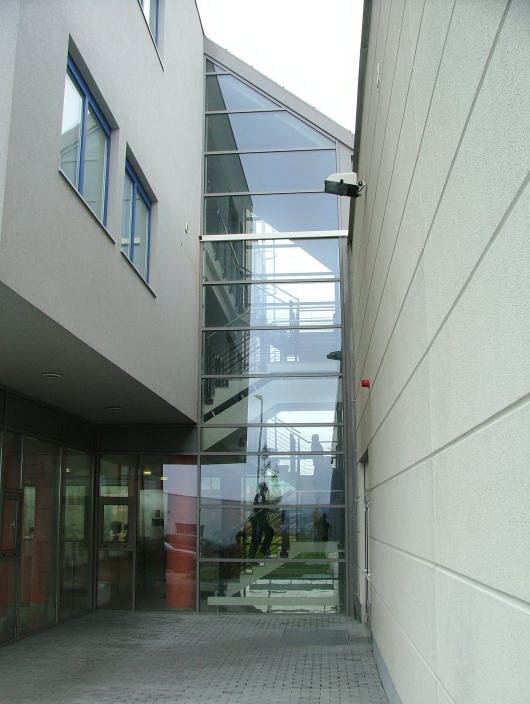
Glass panes placed next to each other create an illusion that birds can fly freely through the glazed section. Photograph by: DESOP
In places where clear glass panes adjoin each other, giving an illusion of undisturbed access through the area, e.g. a greenhouse, glass walkway, corner window and where glazing allows a view of house plants growing indoors or in a greenhouse, patterns for disturbing the uniformity can be installed on the inner and the outer surfaces of the glass since both are visible to birds. Adhering stickers to the outside of a window is preferable, though as it ensures a better result.
Stickers have to be applied to the outside of reflective windows to break up reflections of the surrounding area and the sky in the panes.
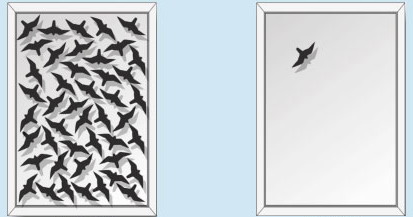
Two solutions based on a silhouette – one works well and the other not. Illustration: FLAP
The illustration above shows an ideal application. Of course, covering the window in this manner is not always practical or possible, but, generally, the more elements, the better. Fortunately, products can now be used to warn birds sufficiently, while still obscuring indoor areas far less.
After choosing a method from our list below, it is always best to fit it the given objects to the outside of the window, should circumstances allow.
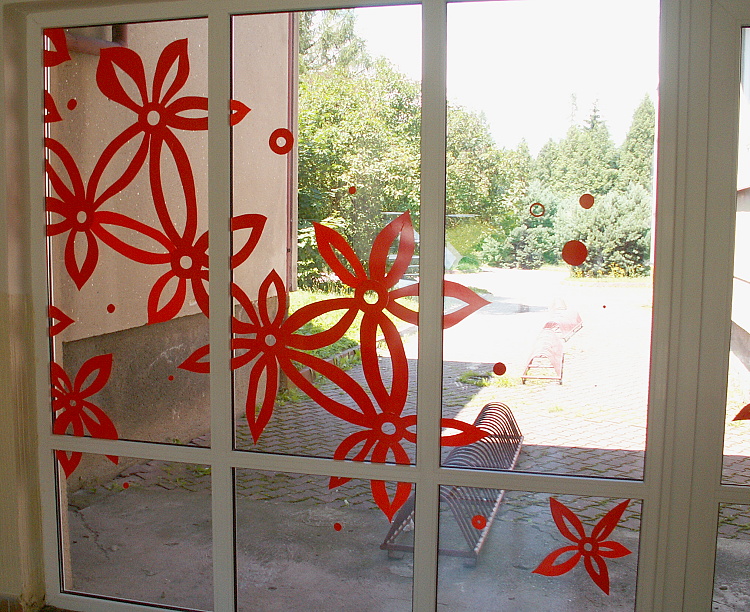
Efforts to minimise instances of birds flying into glass – a grammar school in Svitavy
Patterns of stickers fixed to glass surfaces are the most effective strategies when used properly. They are cheap, easy to apply and reduce the need for other, more complex and expensive technical solutions.
Effective protection – possible solutions
Silhouette of a bird (sticker) – plain or with mesh pattern
Opaque stickers of bird silhouettes are the simplest solution. They work well when spaced relatively close together.
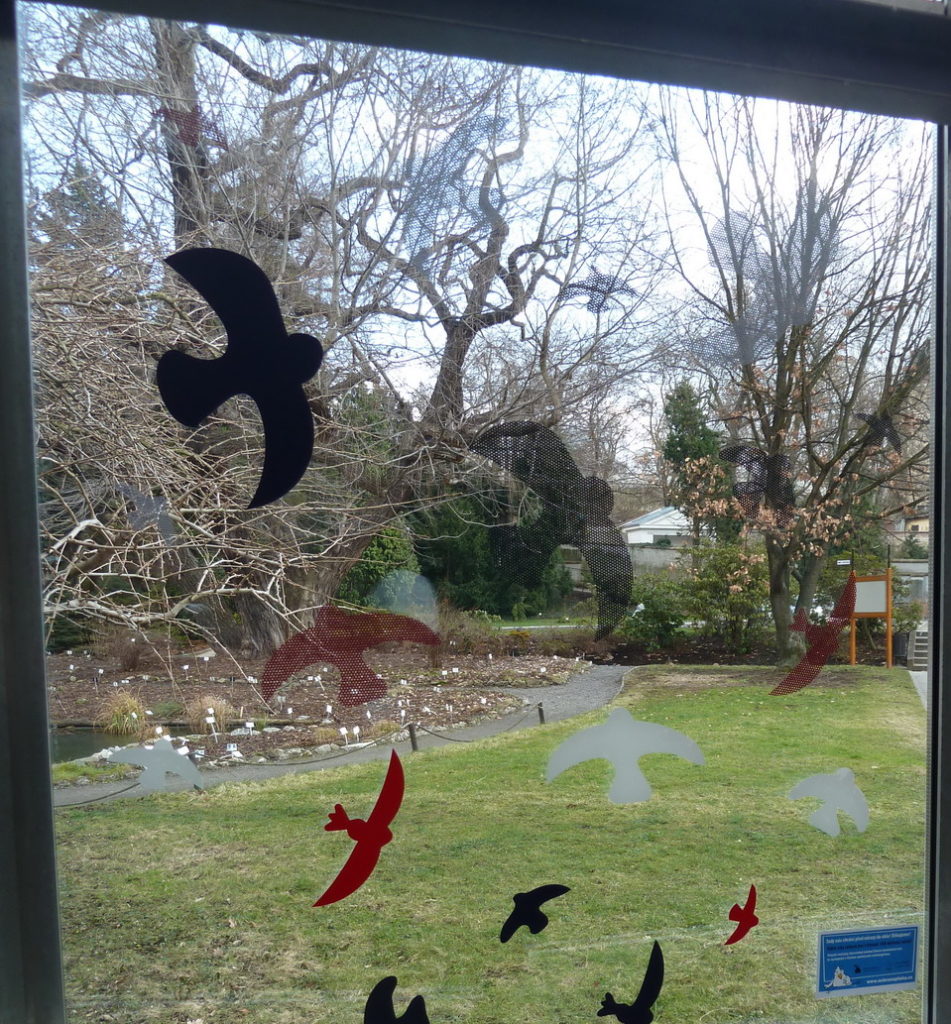
It is also preferable to choose a colour for the silhouette that contrasts strongly with reflections of the surrounding area in the glass; multi-colour stickers are available. Mesh-pattern bird silhouettes are less disturbing from a visual perspective; they combine coloured and transparent lines.
This type is a more transparent alternative and obscures to a lesser extent; birds also see them as clearly as the opaque type.
These stickers can be purchased HERE.
UV-effect stickers
Scientific research shows that birds see ultraviolet (UV) light – a part of the light spectrum invisible to the human eye. Birds use this capability of seeing UV light in their daily struggle for survival in the wild. They are able to detect UV light reflected from other birds’ feathers, various berries and seeds, insects’ wings, spider webs and the like. Experiments show that these patterns seen by birds and almost invisible to humans can reduce the chance of an accident by a bird with a barrier by more than 70%.
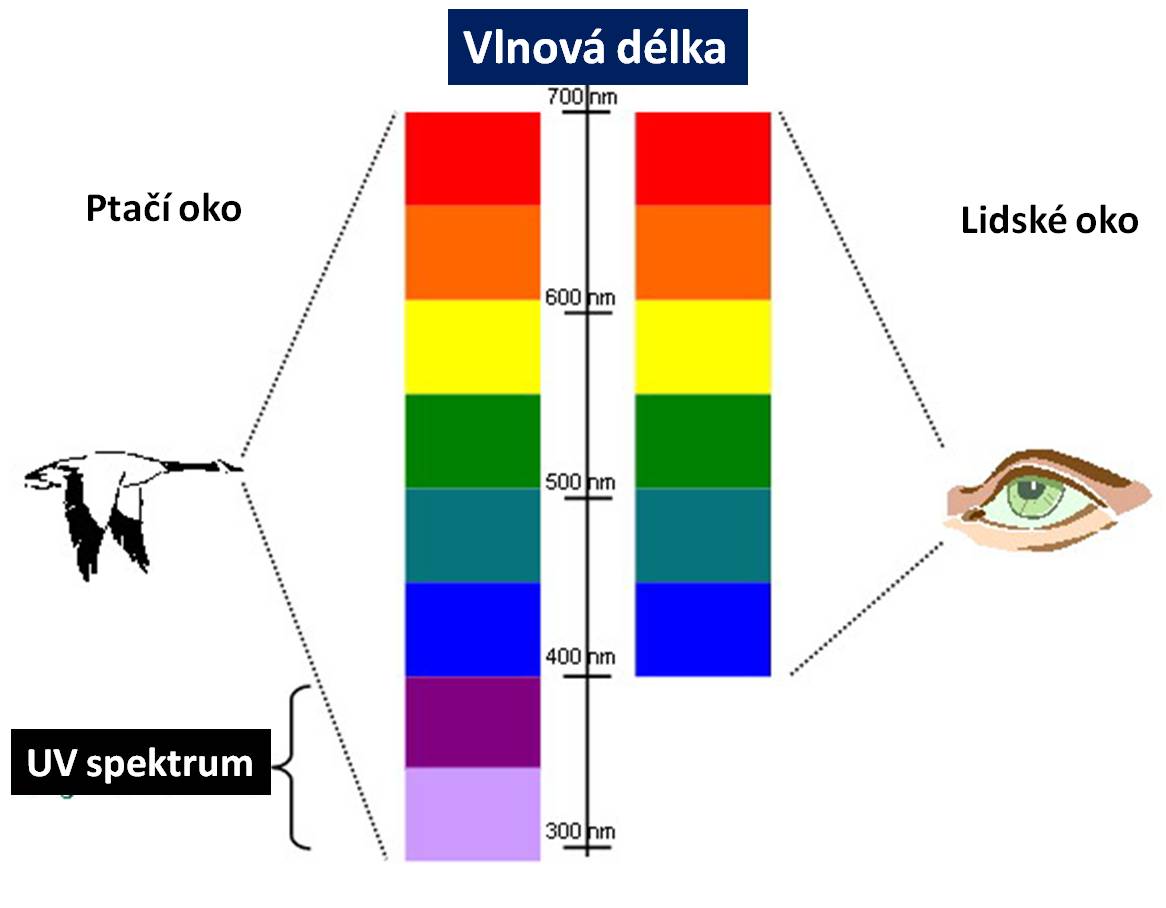
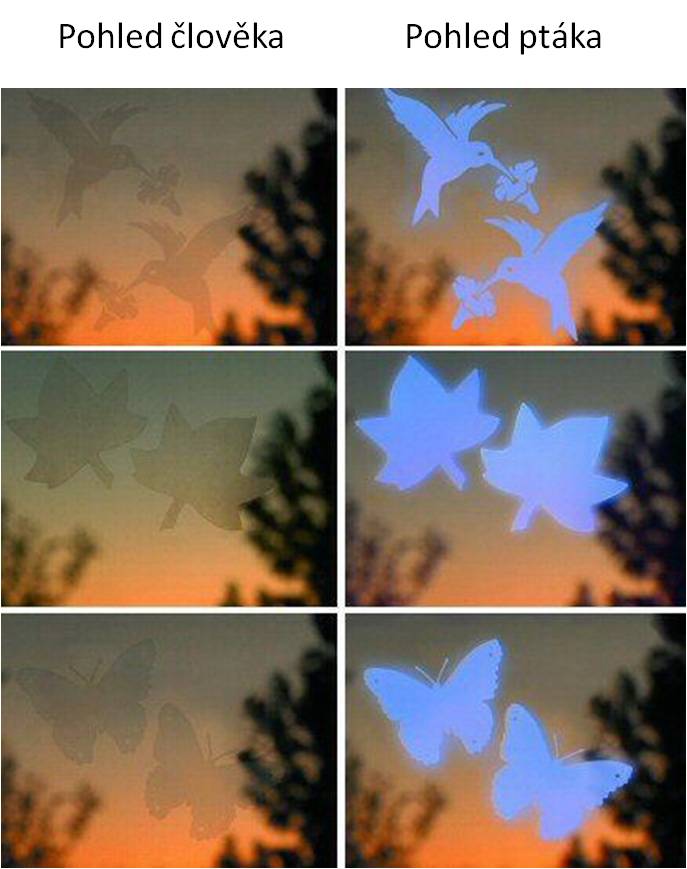
UV-effect stickers as viewed by an eye of a human (left) and bird (right). Photograph by: Window Alert
This effect is employed by UV stickers. These special stickers in different shapes reflect UV light, so birds see them as visible, shiny objects, even though they are almost invisible to humans. This allows birds to be well protected while still allowing light through the glass. Be careful not to confuse such stickers with UV foil that is applied to windows to reflect the sun’s rays so the room does not overheat. This is a completely different thing and doesn’t help birds!
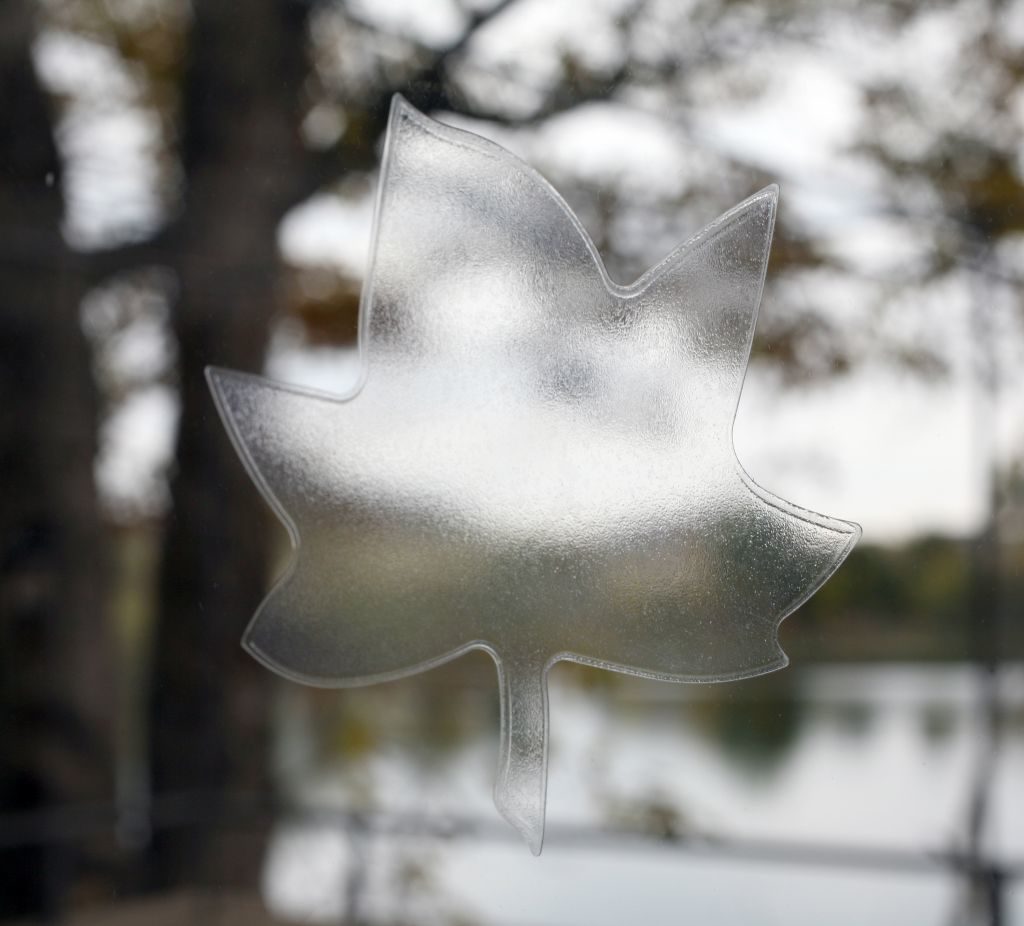
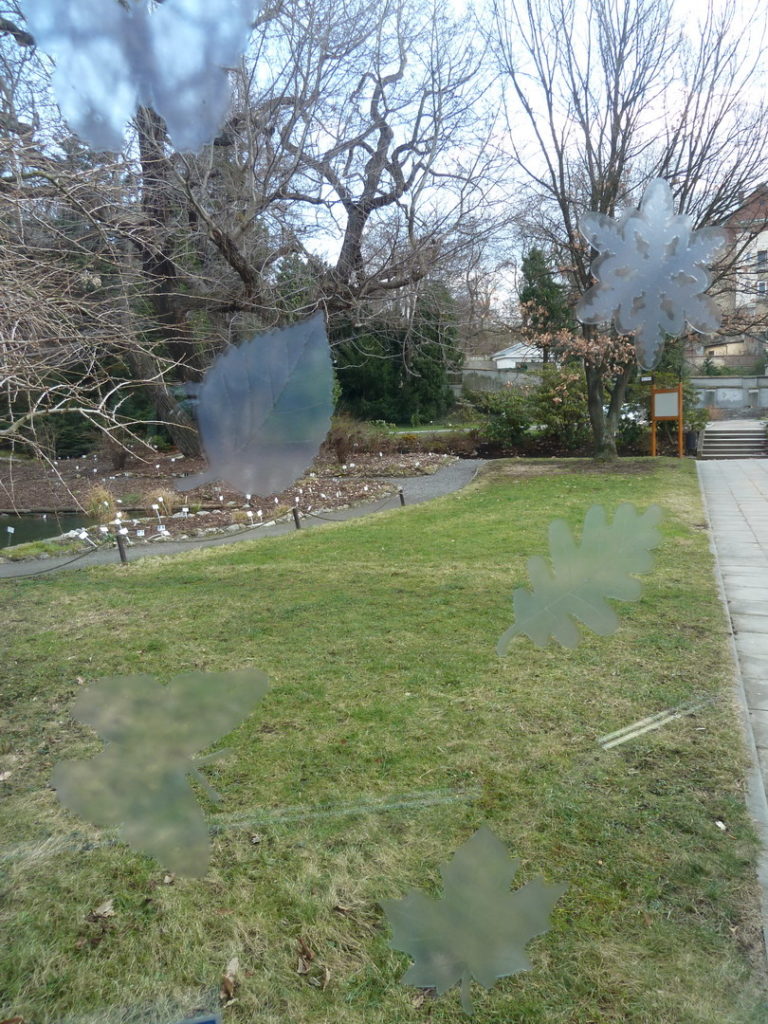
UV stickers obscure the window to a minimal extent.
Of course, the number of objects applied should be sufficient, ideally with a spacing of around 10 cm.
You can buy UV-effect stickers HERE.
Pattern stickers
It’s the density with which stickers are arranged and mix of colours that help birds, the latter highlighting an obstacle even in viable weather conditions. The shape of the sticker is not a factor.
This fits well with the theme of a bird blowing multicoloured bubbles across the entire surface of the window. This motif is designed especially for windows of rooms that need to feel cosy and where a subtle design is preferred, e.g. living rooms, bedrooms and kitchens.
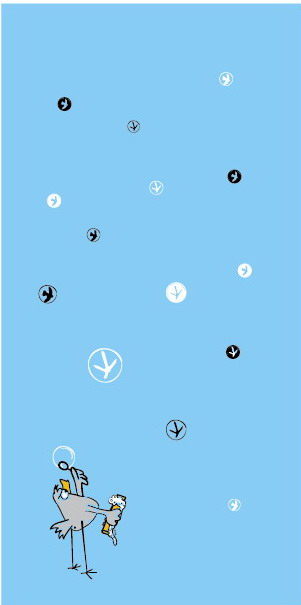
Visualisation on a 160×90 cm window
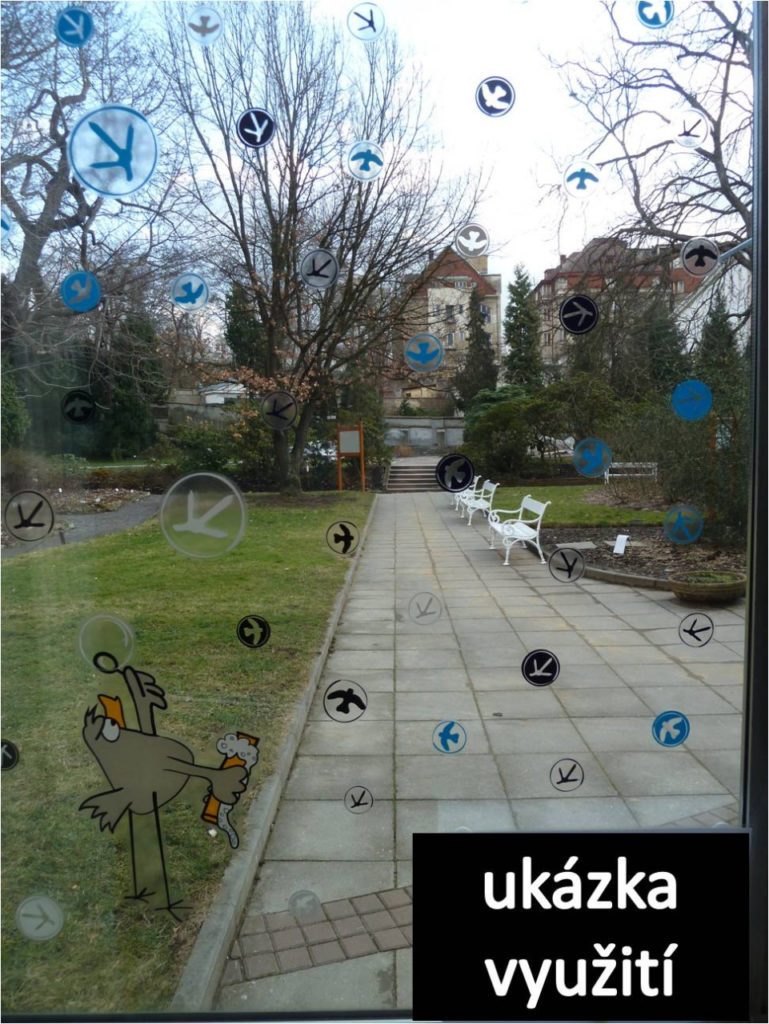
These are double-sided stickers, so also look great from the inside.
Here, it is recommended again that the stickers are placed about 10 cm apart on rather problematic surfaces. Putting them at a greater distance from one another is better than nothing at all to avoid birds flying into the window.
Adhesive tape
A very simple solution exists for the glazed surfaces in glasshouses, sheds, cold frames and so on – strips created from adhesive tape. Express is a sticky tape that adheres very well even to uneven surfaces. It lasts up to half a year on surfaces exposed to outdoor conditions.
Once dry, any remaining adhesive will come off by itself after a few weeks. Strips of sticky tape should be applied horizontally or vertically across the entire glass surface. The ideal spacing between the strips equals 10 cm.
Such tape lasts for months on outdoor surfaces. Handling the tape is child’s play, so repairs are simple. Each reel contains 50 m of tape.
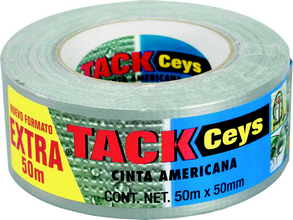
Additional measures for enhanced protection of birds
Placing a bird table on a window ledge or close to it
It’s a good idea to put a bird table, water bowl or bath (or other objects that attract birds) half a metre from (or closer) a problematic glazed surface. This close proximity doesn’t allow birds to get up to the speed that would cause injury by hitting the glass.
Window-mounted bird tables not only prevent birds from impact with the glass to which they are attached, but will also facilitate additional feeding opportunities in winter and – according to the latest research – during the breeding period. What’s more, such placement gives a great view of the birds when feeding from one’s window.
It’s possible to either have a bird table without any other measure for protection or combine it with stickers on the pane, for example.
A bird table fitted to a window ledge is highly visible to birds. When flying away after feeding at such a table, the creatures do so at a slow speed, so any risk of potential injury is minimal.
People living on the ground floor of a building have the option of fitting a bird table close to a window instead. It shouldn’t be placed more than half a metre from the window.
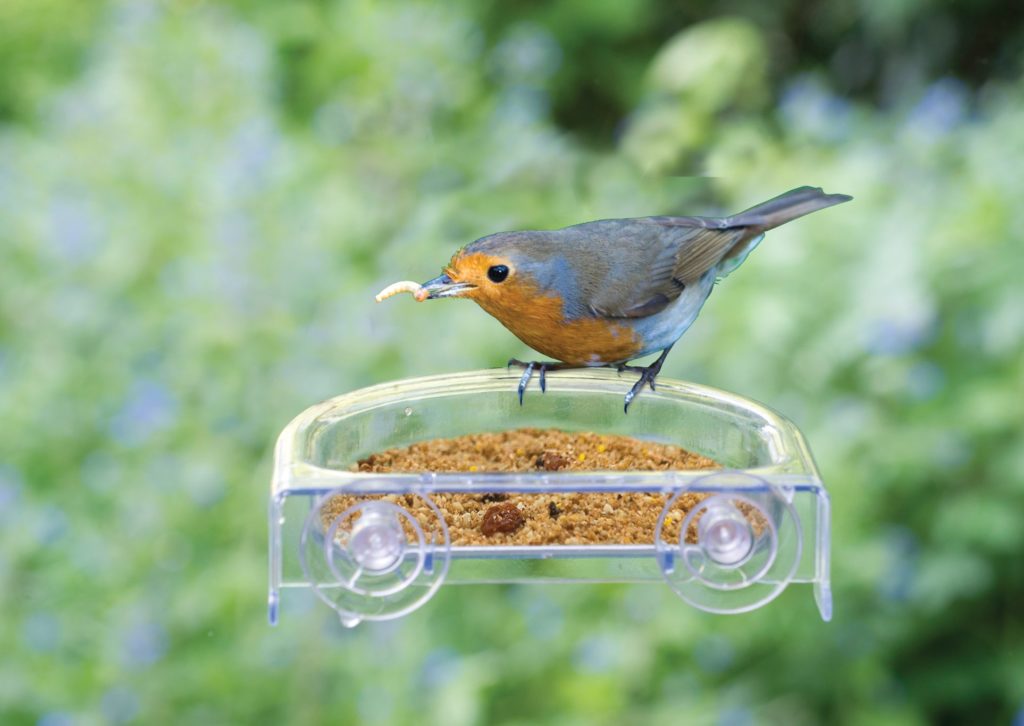
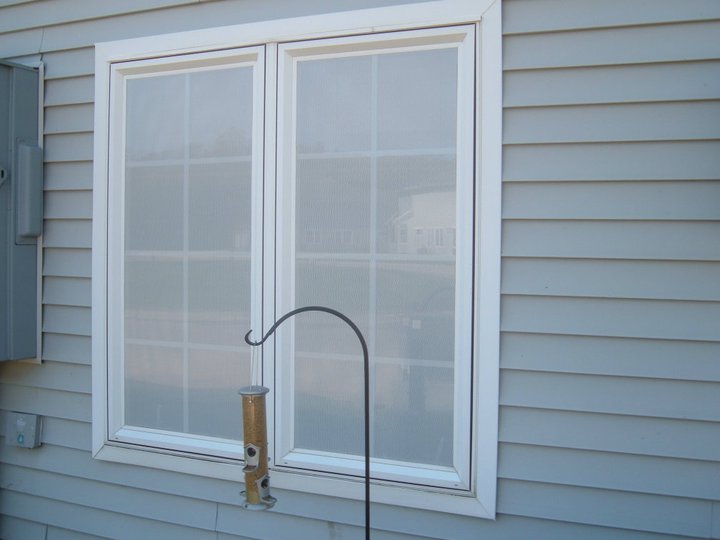
A bird table near to a window pane, combined with a perforated sticker Photograph by: FLAP
Moving plants away from windows or glazed doors
If you can see plants outside windows or glass doors, birds can too. In which case, they may consider them a suitable place to land or seek refuge in. If possible, try to move the plants away from the glazed surface. Certainly, not all plants need access to so much direct sunlight.
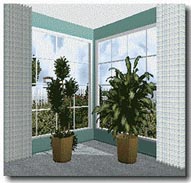
Corner-style windows with plants as decoration pose a major risk to birds. Illustration: FLAP
Window and roller blinds
Drawing curtains, vertical blinds or roller blinds – doing this reduces the chance of a bird confusing the glazed surface for an opening between walls. This is particularly beneficial for corner-mounted windows or where windows or glass doors stand opposite each other. External blinds prove equally suitable for this purpose.
Be creative!
Create a visual obstacle and place it by the glass, e.g. by using light-weight household items that won’t damage the window. The space outside of a window can be utilised, where it’s possible to hang almost anything at the recommended spacing – see the guidelines above. Examples of suitable items: old CDs or DVDs, seasonal decorations, laminated print outs of pictures, cones, lengths of string, etc.
A few photos for inspiration:
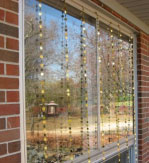
Decorative chains Photograph by: FLAP
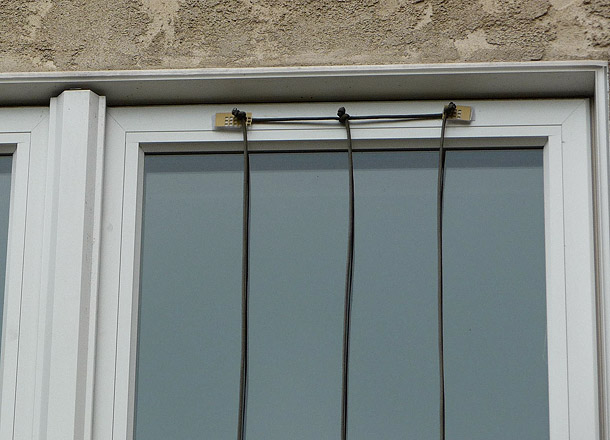
Pieces of string Photograph by: FLAP
Of course, all of the above solutions can be combined with one another. For example, it’s possible to apply silhouette stickers to a window and place a bird table close by, as well as adhere stickers with pictures around a window-mounted bird table. Don’t be afraid to experiment! After all, each bird that avoids this fate is another one saved.
Patterned stickers – for modern structures such as houses or offices
It’s often argued that these kinds of protection stickers deface contemporary glass office buildings, and it’s not unusual for their owners to let birds die through impact with them and even pay others to pick up the corpses every morning. These sticker designs have been developed for this very purpose. If applied in a proper manner, they look very subtle, even on buildings of regular shape. A maximum level of protection is provided though spacing the stickers 10 cm apart, but a distance of about 20 cm is usually enough.
These novel, mesh-patterned stickers of square or circular shape have the advantage of being less visible from the inside so obscure the view of outside less, which is why we recommend them wherever opaque stickers aren’t a good fit. In fact, they can look very elegant and less obtrusive if applied in lines in a fixed, regular manner, making them ideal for cutting-edge architectural buildings, such as offices or houses with a glazed facade. Of course, you can combine a square-pattern formation with other shapes. Shapes are unimportant to birds.
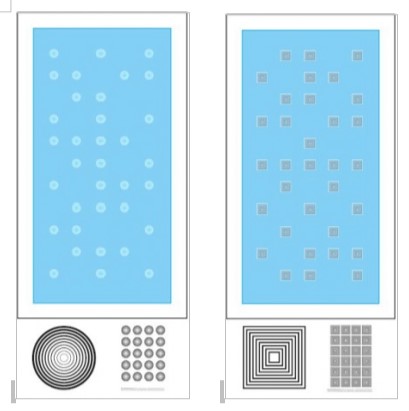
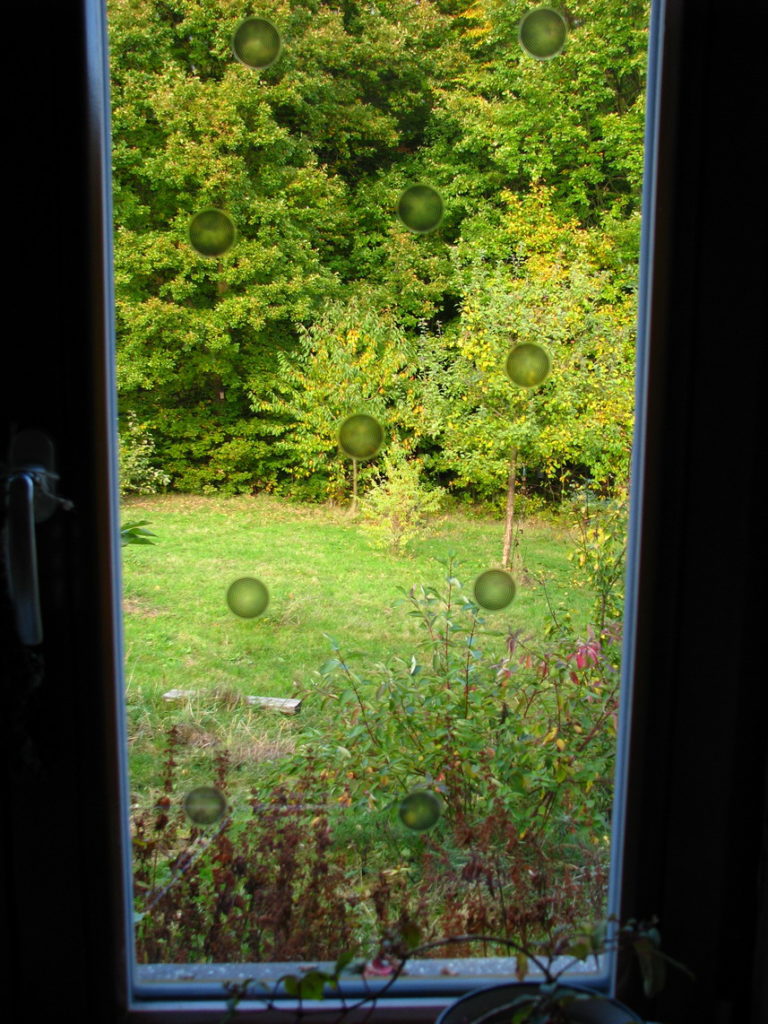
This colour combination is visible to birds in changing lighting conditions, yet looks subtly applied to the glass. The transparent backing prevents the stickers from blocking out daylight from the room.
Shop for such stickers HERE.
